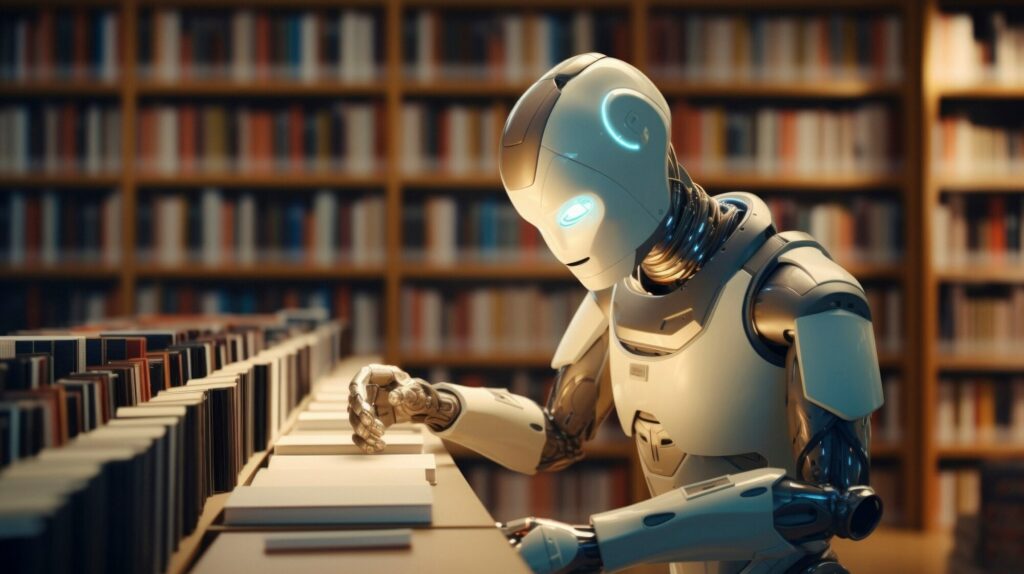Artificial Intelligence (AI) has emerged as a transformative force in many sectors, and education is no exception. The application of AI in education is reshaping traditional methods of teaching and learning, offering innovative solutions that enhance student engagement, personalize learning experiences, and streamline administrative tasks. This blog explores the myriad ways in which AI is revolutionizing education, with a particular focus on AI tutoring tools and photo math solvers.

Personalized Learning Experiences
One of the most significant impacts of AI in education is the ability to create personalized learning experiences. Traditional educational systems often employ a standardized approach to teaching, which can be less effective for students who have diverse learning needs and paces. AI addresses this challenge by providing customized learning pathways tailored to each student’s unique abilities and learning styles.
AI Tutoring Tools
AI tutoring tools, such as the HiX AI Tutor, exemplify how technology can provide personalized educational support. These tools utilize advanced algorithms to assess a student’s understanding of various subjects and deliver tailored instruction and feedback. By identifying areas where a student struggles and adjusting the learning material accordingly, AI tutoring tools ensure that students receive the targeted assistance they need to succeed.
For example, the HiX AI Tutor offers interactive lessons and real-time feedback, allowing students to learn at their own pace and revisit challenging topics as necessary. This type of one-on-one tutoring simulation is particularly beneficial for students who may not have access to traditional tutoring services due to geographical or financial constraints.
Enhancing Student Engagement
Engagement is a critical factor in effective learning. However, maintaining student engagement can be challenging, especially in large classrooms where individual attention is limited. AI technology addresses this issue by making learning more interactive and engaging.
Gamified Learning
AI can integrate gamification into the educational process, turning learning into a more enjoyable and engaging experience. Gamified learning platforms use AI to create adaptive learning games that adjust their difficulty based on the student’s progress. These interactive games make complex subjects more accessible and enjoyable, keeping students motivated and engaged.
Interactive Content
AI-powered interactive content, such as simulations and virtual labs, provides students with hands-on learning experiences. These tools allow students to experiment with scientific concepts in a virtual environment, which can enhance their understanding and retention of the material. The real-time feedback provided by these interactive tools helps students to grasp difficult concepts more effectively.
Intelligent Tutoring Systems
Intelligent Tutoring Systems (ITS) represent a significant advancement in AI-driven education. These systems provide personalized instruction and feedback, mimicking the experience of having a personal tutor.
AI Tutoring Tool
The HiX AI Tutor is a prime example of an intelligent tutoring system. Using natural language processing and machine learning, the HiX AI Tutor can understand and respond to student queries, provide detailed explanations, and guide students through complex problems. This tool not only aids in understanding difficult concepts but also encourages the development of critical thinking and problem-solving skills.
Simplifying Complex Subjects
AI has proven particularly effective in simplifying complex subjects, making them more accessible to students of varying abilities. This capability is especially evident in the field of mathematics.
Photo Math Solvers
Photo math solvers, like Mathful, utilize AI to assist students in solving mathematical problems. Students can simply take a photo of a math problem, and the AI provides a step-by-step solution. This technology not only helps students understand the problem-solving process but also enhances their mathematical skills by providing instant feedback and explanations.
Photo math solvers are especially useful for students who struggle with traditional methods of learning math. By breaking down problems into manageable steps, these tools make math less intimidating and more accessible.
Streamlining Administrative Tasks
Beyond improving learning and teaching methods, AI is also transforming the administrative aspects of education. Automation of routine administrative tasks allows educators to focus more on teaching and less on paperwork.
Automated Grading
AI-powered grading systems can evaluate student assignments and provide feedback with high accuracy and consistency. This automation saves teachers significant time, which can be redirected towards more meaningful interactions with students. Additionally, AI grading systems can provide detailed analytics on student performance, helping educators to identify areas where students may need additional support.
Efficient Resource Management
AI can also optimize resource management within educational institutions. From scheduling classes to managing student records, AI systems streamline administrative processes, making them more efficient and less prone to errors. This optimization leads to better utilization of resources and improved overall operational efficiency.
Enhancing Accessibility
AI technology has the potential to make education more accessible to a wider audience. By providing tools that support diverse learning needs, AI ensures that students with different abilities and backgrounds can benefit from quality education.
Language Translation and Speech Recognition
AI-powered language translation and speech recognition tools break down language barriers, making educational content accessible to non-native speakers. These tools can translate lectures, texts, and other educational materials in real-time, ensuring that language differences do not hinder learning.
Support for Students with Disabilities
AI also supports students with disabilities by providing assistive technologies. For instance, AI-driven speech-to-text and text-to-speech applications help students with hearing or visual impairments to participate fully in the learning process. These technologies ensure that all students have equal opportunities to succeed.
Conclusion
AI is undeniably a game changer in the field of education. From personalized learning and intelligent tutoring systems to simplifying complex subjects and streamlining administrative tasks, AI is transforming every aspect of the educational landscape. Tools like the HiX AI Tutor and Mathful demonstrate the immense potential of AI to enhance learning experiences and outcomes.
As AI technology continues to evolve, its impact on education will only grow, offering new opportunities to improve teaching and learning. By embracing AI, educational institutions can provide more personalized, engaging, and accessible learning experiences, preparing students for the future in ways that were previously unimaginable.
